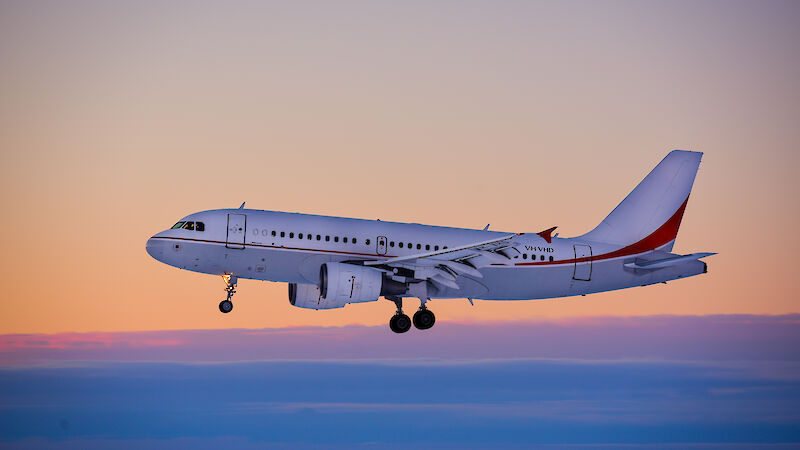This Antarctic season saw 557 people travel in support of the Australian Antarctic program. The Aurora Australis was engaged for 183 days and there were nine direct flights to Wilkins in the A319. With Wilkins runway operating from November to March, it was our longest flying season yet. But it’s the ‘bacon index’ that perhaps provides the best indication of season activity, with some 1244kg consumed!
Highlights of the season include the return of the six-week whale research voyage on Tangaroa in mid-March. Whales were located acoustically more than 1000km away from the ship, and scientists completed numerous sampling trawls, visual whale sightings, biopsy collections and more.
An early season voyage of Aurora Australis to the Totten and Mertz glaciers successfully collected some tricky moorings and many chemical and physical seawater profiles.
At Mawson, early fears about sea ice extent did not materialise and the ship made it into Horseshoe Harbour to fully refuel the station. With extra time on their hands after the resupply and refuelling, a team at Kingston Headquarters and on the ship put together a fantastic marine science program for the remainder of the voyage. Some high value science was achieved, including trawling for sample collection, live krill collection and mooring recovery.
Mawson also saw the continuation of the Béchervaise Island penguin monitoring program, while fuel depots were also established along a 600 nautical mile round trip flight from Richardson Lake to Enderby Land, in support of one of our high priority projects to install mass balance GPS equipment.
The folks at Macquarie Island had a busy time restoring their water supply after the biggest rainfall event recorded on the ‘sponge’ (105.6mm in 36 hours) filled up Gadgets Gully dam with mud and rock. A lot of work was needed to clear out the dam and fix broken lines to get water flowing again. Despite this, field work continued on the island, including albatross population monitoring, fuel spill bioremediation work and Parks and Wildlife projects, while scientific field huts were restocked and many of the huts flown in for the pest eradication project were removed.
At Casey, scientists running the Free Ocean Carbon Enrichment (FOCE) experiment successfully installed and operated ocean acidification chambers under the sea ice in O’Brien Bay. A hydrographic survey crew were also out on the water around Casey and a swag of French expeditioners moved through Casey (via the A319) and up to Dome C by air. The Casey team managed a successful resupply early in the season, while hosting a Channel 7 media crew and our Minister, Secretary and Deputy Secretary on a multi-day VIP trip.
Ocean acidification work continued at Davis, using ‘minicosms’ installed in shipping containers on the shoreline. Davis also supported a Chinese geology team with trips to Mount Brown and the Beaver Lake area. Science work at the Amanda Bay penguin colony was also completed from Davis. The concrete slab for the new waste management facility was poured and installation of the first tank completed. The Davis team also put in an amazing effort to assist the medical evacuation of a sick team member back to Hobart on the ship.
In February the United States terminated a high altitude balloon flight for NASA’s ANITA III astrophysics experiment, just 100 nautical miles from Davis. Two of our helicopters collected the science payload, which was jettisoned from 125 000 feet by parachute.
In April we undertook a proof of concept flight for the United States program, taking 14 US expeditioners direct from Hobart to McMurdo. The A319 collected the expeditioners from a commercial flight in Melbourne and flew them to Hobart, where they were kitted with pre-positioned US clothing. Currently, the US flies all their Antarctic expeditioners stationed at McMurdo via Christchurch in New Zealand. It is hoped the flight will prove that flying to McMurdo via Hobart is a viable cost-effective option that might complement the existing route through Christchurch.
Operations down south continue now with 68 winter expeditioners across the four stations engaged in maintenance, science, infrastructure projects, and programs for the Tasmanian Parks and Wildlife Service and Bureau of Meteorology.
Thanks go to everyone involved in making this season so successful, safe and efficient.
Robb Clifton
Operations Manager, Australian Antarctic Division

